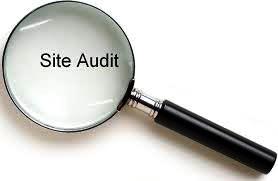Some companies are still under the assumption that their corporate brand is simply a matter of a logo, corporate colors, and a font style.
I’ve written articles and produced videos in the past that point out that corporate branding has evolved. You may have already seen or read this information.
In today’s business environment, your brand is far more inclusive. Think of it as your company’s personality.
Branding in this day and age includes every aspect of how your company is perceived by clients and prospects in the marketplace. So, yes logo, colors, font style; all these do matter. But it is far more than that. It is much more about the customer experience.
Rather than rehash the elements of branding that I have discussed in previous posts, today I want to focus on how your website affects your brand.
Although your website is simply one tool for communicating with your clients and prospects, it can be an extremely powerful one. Your online presence is more important than ever, now that most consumers shop and compare products and services using the Internet. Therefore, take the time to create a website that is a true reflection of your corporate values and communicates this important brand messaging to your clients and prospects.
Review your website for these four key elements to ensure that it is properly reflecting your brand identity:
1. Include information that is valuable to your clients and prospects.
First and foremost, be sure that your company’s website is providing content that matters to your clients and prospects. Yes, you want to tell them about you and your services, but remember that what will attract them is what you can do for them. Failing to give visitors what they need and want will only result in a high bounce rate, and you may as well not even have an online presence. Know your target audience, provide information that is relevant to them, and presented in an organized and easy to consume fashion ads a huge amount of value.
2. Include calls to action to engage your site visitors.
Let’s face it, the purpose of having an online presence is to help drive business. And in order to do this, you must include statements within your site that will not only capture the attention of your visitors but will also elicit a response. Using phrases such as “visit us today” could entice a prospect, especially someone on a mobile device, to drop in. Or, perhaps you would like them to sign up to receive notifications of specials that you run from time to time. Be sure to include a simple to use call to action button that will entice visitors to click. And make the form simple, as statistics show that the more information you are soliciting, the lower the opt in rate will be.
3. Make sure your website is interactive.
We have all received brochures or pamphlets that are jam-packed with information. And we all know what we do with those-we throw them out. Poorly designed information, regardless of how valuable it is, will ultimately be discounted and discarded by your prospect. Make sure that your website isn’t cluttered with information. Back to our point about making information easily accessible to site visitors, tried to ensure that you have interactive features for them as well. This can not only make a more individually tailored experience for your visitor, but it can also help to build loyalty to your brand. For example if you are a financial professional, consider including an app such as a calculator that gives your clients and prospects the opportunity to get a clear picture of the services they are seeking.
4. Consider the design of your website.
How your website looks and feels to visitors should reflect the true essence of your brand. Ensure that the logo, colors, font choices are consistent with your overall brand. Your site design should speak to your visitors about your corporate “personality”. Remember what I said at the beginning of this article, and make sure that are everything that you are providing on your website gives clients and prospects a sense of the integrity of your business.
These four tactics are crucial to ensure that your website will optimize your brand identity. As a business owner, you need to take seriously how you project your online presence and how this creates the type of experience you are providing to clients and prospects.
Until next time…
Are you ready to grow your business now? If you’re ready to take the next step and make your business more profitable, contact us today.
If you like the information you are receiving, please consider forwarding this post.





